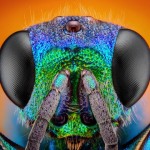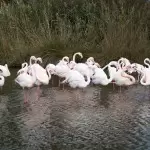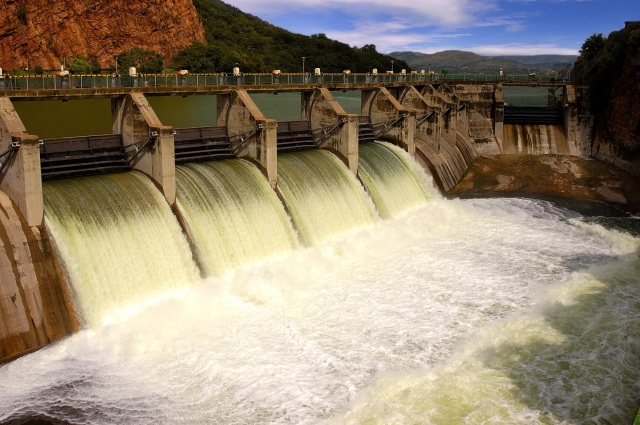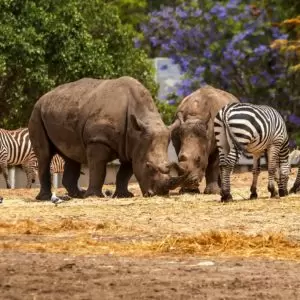
Defining Zoology
Biological life on planet Earth is undoubtedly immense and the subject that studies it - biology - is such a vast area of study that no graduate in the subject could hope to understand all of it. Increasingly, biology graduates are looking for ways to find their niche early and focus on one specific area. One of those vital areas of biology is called zoology. This is the study of animal life (1). It is so vast that it's broken down into many other sub-areas. Regardless of niche, zoologists examine many areas of animal life, covering such varied areas as animal anatomy, ecology, fetal development, their evolution (and common ancestors with similar animals in the same family or order and those related), distribution and habits, diet, and place in the food chain. But zoology is not just limited to living animals; some areas examine extinct species. Others are interested in how animals interact with humans.
As with many scientific disciplines, the term “zoology” comes from ancient Greek through Latin (2). “Zōion” - shortened to “zoo” simply means “animal”. The second part of the word “ology” comes from “logos” which means study, learning, or knowledge. The older Latin term for the phrase was “Zoologia”. Zoologists may take an interest in a specific order, family or genus, or take an interest in one specific species or one aspect of that species life.
History of Zoology
Ancient Societies
As with botany and several other biological sciences, zoology is relatively new as far as being an academic discipline is concerned. In some ways, ancient societies saw the study of animals as a luxury and unnecessary except in some limited cases. Interests in the processes of the animal life were limited to lifecycle and animal husbandry (gestation and reproduction), and lifestyle and health (diet, environmental needs, disease transmission), all of which were viewed purely through the lens of using animals for human benefit (meat, dairy, plant pollination, guard dogs, pets). A history of early zoology is simply the history of early agriculture.
But the fledgeling science of zoology began in this period. While most were only concerned with those issues above (categorized today as “Animal Science”), Aristotle's broad array of interests ignited the study of animal life beyond the merely functional. He is credited with effectively starting all of biology and although his interest in botany is well-understood, zoology also fascinated him. He looked at the biological functions of animals, commenting on such issues as metabolism, temperature and environment, embryo and sexual reproduction and inherited traits. He was not limited to the functional aspect but was interested in development for itself. His study was the most comprehensive prior to Darwin including classification and dissection, nature, attributes and habitats on the island of Lesbos (3).
Later, Galen would take up the mantle. This famous early polymath dabbled in the biological sciences. As far as zoology is concerned, his work in anatomy and zoology developed animal sciences that allowed for further expansion of surplus agriculture. Their work would inform zoology for several thousand years and almost up to Darwin's theory with a few modifications. Teleology would later become Natural Theology under Christianity, but the basic philosophy of life remained the same (4).
Important works in the Middle East and the Far East include Susruta and Zhang Zhongjing. These may not be familiar to a western lay audience, but the importance of their work in zoology is not in doubt. These were physicians primarily but some of their work in no small part focused on animal physiology. In the fourth century BC, Zhuangzi theorized the first ever concept of biological evolution (5) - remarkably suggesting that animals adapted to environmental change and underwent natural drift.
Medieval Europe and the Middle East
In Western Europe, the post-Roman period through to the late Middle Ages is not a source of great scientific knowledge. As stated above, the majority of what we understood in the Classical World informed scholars until the Enlightenment. But that's not to say there was no important work. In the Islamic Middle East, thanks to trade and interaction with the Eastern Roman Empire (Byzantium) that knowledge was preserved and translated into Arabic as well as Greek.
It was still considered important, but in the Middle East scholars drove learning forward in a period known as The Islamic Golden Age. This lasted until the 15th-16th centuries when the fall of Byzantium led to many in the east fleeing to Western Europe. This event is largely credited with kickstarting the Renaissance which, in turn, would eventually lead to The Enlightenment. In the 8th century, al-Jahiz (6) formulated yet another idea that hinted at an understanding of evolutionary theory. While Avicenna and Averroes - also physicians - pushed our understanding of physiology further forward once more. These people were always trying to understand human physiology but this often had benefits for zoology too. Their philosophical work towards biology would inform later zoology (7).
Not that medieval Europe was completely devoid of advances in zoology. Towards the end of the medieval period (known as the High Middle Ages), figures such as Hildegard of Bingen - who developed a new taxonomy (8) and Albertus Magnus - who wrote about logic and observation, finally arguing that science and religion were not incompatible, are still celebrated today (9). Magnus mentored another great European thinker - Thomas Aquinas - one of the world's earliest scientists and the greatest supporter of Classical Theology.
Renaissance and Enlightenment
The Renaissance in Western Europe changed many things. It was the beginning of nation states and the breaking up of the idea of “Christendom”. It was also the beginning of scientific thought. In the early days, zoology (although it still did not have a name) focused as many other disciplines did such as early archaeology, on the collection of exotic items. It was perhaps inevitable that the collection of exotic animals (and plants) from faraway shores such as the Americas would lead to their scientific study and the commenting on their relationships to more familiar species from the Old World. Things replaced reports, living specimens replaced description and anecdote. It was an age of growing empiricism in areas such as taxonomy and anatomy, in animals as well as in humans. This led to a fusing of art and proto-sciences from such people as Leonardo Da Vinci (10) and Albrecht Dürer (11) whose art and technical visual media focused on mechanics and how bodies worked.
But the invention of the microscope was the most important development for biology until Darwin's work. Once Antony van Leeuwenhoek perfected the early microscope (12), improving resolution and quality, it allowed for the discovery of the elements that could not be seen with the naked eye. Most early microscopists were interested in insects (entomology) but it would eventually lead to the ability to look deeper still, such as the discovery of the cell, bacteria, spermatozoa, and eventually viruses. The early years of the Enlightenment also had another conundrum to deal with - the true nature of fossilized extinct creatures. Dinosaurs were once passed off as the biblical race of giants and creatures from before Noah's Flood (13) but the wealth of new evidence across the world simply had to be addressed. Today, paleontology is the result of an unlikely crossover between zoology and geology, straddling both, and providing evidence in many fields.
Enter Darwin
The impact of Charles Darwin's work on every biological science cannot be overstated; zoology is no exception (14). Until 1859 when his work On the Origin of Species was published, zoology focused on animal physiology (physical apparatus of their bodies), taxonomy (classification), and natural history (diversity and spread - related to taxonomy). But Darwin finally forced zoologists to examine more complex issues - the origin of life and the origins of species, natural selection, and the possibility of common ancestry between all life. Biogeography, biodiversity and the human impact on species all came into question as elements of natural philosophy rather than natural theology. Zoology would eventually crossover with many areas of environmental science. Already discussed is geology, but also ecology, the prospect of environmental forcings and many other areas. Alfred Russell Wallace and those who followed in Darwin's footsteps as early zoologists carried on this work. But Darwin's impact goes way beyond changing the sciences - his work changed how we think about science (15). Darwin's zeitgeist allowed for new sciences to emerge and for existing sciences to change and evolve.
What of Zoology Today?
The remainder of the 19th century was effectively an ideological war between the old guard (religionists and scientists who felt the evidence for Darwinian evolution was not strong enough at the time) and the Darwinists who were eager to build on the work (16, p1). But the war would soon be over at least as far as the academic community was concerned. Researchers began developing new methods and sciences in broad areas ranging from genetics to geology, from ecology to botany, zoology and human anatomy and many more. Microbiology had implications for human health, and for botany and zoology. The nature of zoology from the 20th century and beyond is about relationships. It became a profession in the early part of the last century at a time when natural history and essentialism (function and form) gave way to experimentation. The following decades would see the arrival of intensive farming, fueled partly by developments in both zoology and botany. But more academic pursuits included microbiology and eventually embryology, particularly for animal and human health (16, p2). When Gregor Mendel discovered the gene (17), zoology and biology took on its modern form.
No science exists in isolation and as the 21st century develops, the importance of each science to each other cannot be overstated. Zoology's relationship with ecology, for example, began in the early 20th century (16, p6) but as the 20th wore on, growing concern about the environmental impact took over. Rachel Carson's book Silent Spring looked at the impact of many human actions on both animals and plants, essentially driving modern environmentalism. Also, further developments in genetics and genetic treatments have received no small contribution to (and also benefited) zoological researchers. But zoology has also forged relationships with the traditional sciences of chemistry and physics (16, p7), and more recently with data science which has proven useful to biogeography and the importance of the environment to conservation and evolution.
Sub-Disciplines of Zoology
There are approximately 2 million animal species on planet Earth with any number currently undiscovered. No zoologist can hope to understand them all; that is why it's necessary to break down zoology into the broad subdisciplines listed here.
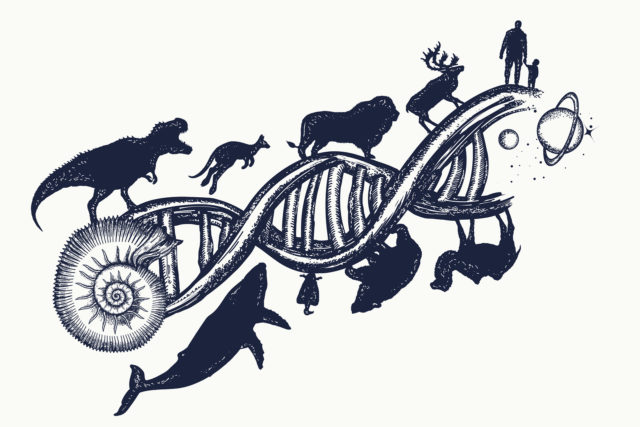
Animal Physiology
This is the study of the parts of an animal's body from the cell right up to major organs (18). Anything a physiologist studies in humans, an animal physiologist studies in the wide variety of animal species. As well as body parts, this will mean disease pathology and their impact on animal bodies, diet, nutrition and metabolism, and even reproduction and reproductive organs, histology and endocrine functions. Not all animals reproduce sexually, and the mechanisms of asexual reproduction are also of interest. This means that physiologists can work in conservation and ecology, looking at issues such as genetic diversity, veterinary sciences, disease prevention and treatment.
Animal Science
While most other subareas of zoology focus on animals in the wild or semi-natural habitats (zoos, animal parks, captivity and conservation) Animal Science is concerned with the biology of livestock animals (19). That means the health of farm animals, aspects of the food chain, production, management and selection of animals that live on farms and ranches, but also animals in the home - pets. Also known as animal biosciences or animal husbandry, that expanded to include any direct interaction between human and animals which of course means pets but also working animals (assistance dogs, military and police dogs) and those used in medical treatment of humans (pet therapy). Animal scientists can also be involved in conservation, advising on issues such as monoculture, promoting the introduction of animals to complement agriculture by reducing pests, to keep soil aired and healthy for produce.
Animal Taxonomy
How do we classify animals? When animals have attributes in several classes, how do we go about determining in which category they belong (the platypus, for example, is a mammal but lays eggs in its reproduction process - unique in mammals)? Humans love putting things in neat little boxes. In some ways, it's unhelpful, but classification simplifies things for researchers and helps in the study of the discovery of new species. As the tree branches out further, classification aids many things. That's why taxonomy is a subdiscipline of its own (20). It also helps to examine generalizations in groups in the study of common ancestors between phyla, classes, and orders.
Anthrozoology
Bringing ethnobiology into the world of zoology, anthrozoology studies the interactions that animals have with humans. It includes aspects of anthropology and archaeology, animal health and wellbeing (physical health, mental health and veterinary science) along with ethnology, history, philosophy and sociology (21). Mostly, they are concerned with qualitative data on relationships and interactions, and the short and long-term effects of those relationships over time. For example, how dogs domesticated themselves in antiquity and the symbiotic relationship that humans now have with canines. They will also look at evidence from archaeology and anthropology of past relationships, including representations of animals and the relationships.
Arachnology
Arachnology is the study of animals in the arachnids class (22). The most obvious family in this class are spiders and daddy longlegs, but the class also includes fleas, ticks, mites, harvestmen, and scorpions. This is an enormous class with thousands of species. As with any other animal type divided solely by class, arachnologists study the lifecycle, metabolism, environment and other issues concerning arachnids. Researchers will usually specialize in one area (spiders) or can be generalists too. The history of the arachnid is a long and successful one, emerging in the fossil record from around 420 million years ago.
Acarology
This is the subarea of arachnology concerned with parasitic arachnids such as mites, ticks and fleas (22).
Archaeozoology (or Zooarchaeology)
Blending archaeology with zoology, this is the study of human interactions with animals in the past through the study of material remains (23). This means how humans hunted animals, what they did with the bones, horn, ivory (used as tools), fur and leather (for clothing) and even what people ate. Did they have special meaning? At what point did animal husbandry begin, how, and why? These are the sorts of questions that an archaeozoologist will attempt to answer. It differs from anthrozoology in that it is less concerned with current human interactions with animals and the social aspect. This can also include “accidental” or “incidental” interactions such as species that move into an area when the ecological balance changes. Ancient woodland clearance for agriculture will see changes in bird and insect species, for example.
Behavioral Ecology
Blending the environmental science of ecology with zoology and animal behavior, Behavioral Ecology is where researchers examine ecological and environmental forcings on animal behavior - essentially, studying the value of behavior on survival (24). It's a loose spin-off from ethology (see below). Its key principles include examining evolutionary advantages of key traits to a species, plus the ability to adapt - both core to evolutionary theory. Yet there are also adaptive and nonadaptive traits in natural selection. An animal's size may be advantageous (the ability to dominate its peers and have more opportunities for peers) or disadvantageous (where food resources are scarce, larger animals require more food). The environment and the individual's attributes then determine which go on to breed and spread their genetic code.
Biological Anthropology
Biological anthropology examines both modern humans, our cousins across the breadth of all primate species, and all common ancestors that link them. It is arguably the only area of zoology that examines human biology, anatomy, physiology as an aspect of relationships between animals. It sometimes goes by the name of physical anthropology (25). It seeks to answer questions centering on when anatomically modern humans diverged from the primates to which we are most related (and traces that path backwards) but also of genetic diversity in modern humans. For example, the study of why such physical attributes as skin color arose (now understood to have developed as a response to levels of UV light and Vitamin D) and physical attributes such as the Epicanthic Fold (26) (present in people from the Far East and Native Americans but not other ethnicities). However, it also seeks to understand physical attributes that may have contributed to language development.
Bionics
This is an area of applied technology, but it has its roots in zoology. This is the study of how animals move, their motor functions and mechanics, and uses the design concept to apply to technologies. Bionics professionals design and build artificial system based on examples from the natural world (27). This can include such areas as robotics, prosthetics and even space exploration. It differs from bioengineering in that it doesn't apply to biological entities (such as livestock farming) but creates artificial systems based on the observed mechanics. The next major breakthrough could be in robotics, especially in light of recent AI developments for the web. Pattern recognition as a natural biological instinct could drive bionics and artificial intelligence in future.
Cetology
Cetaceans are the order of marine mammals which includes all whales, dolphins and porpoises. There are approximately 80 species within these categories and stand apart from all other mammals in that, despite having lungs, are marine creatures. Cetologists study the unique evolutionary development, diet, relationships and everything else related to this group. They have confused since ancient Greece when Aristotle commented on their need to breathe air while living in water but must come up for air, unlike fish and many other marine species. It is believed that cetaceans emerged from the seas like all other mammals but later returned (28).
Comparative Anatomy
A useful tool for the study of evolution of anatomy, this is an area of study within itself whose primary goal is to examine and look for evidence for common descent, ancestry, and divergence, including atavistic structures within a body (for example, signs of hind legs in whales and other cetaceans) (29). Within zoology, comparative anatomy can be used to examine links in the tree of life from the smallest and simplest forms of animal life right up to anatomically modern humans. Using other tools and methods such as genetics, comparative anatomists can examine to see whether the same anatomical structure in two different species is indicative of a recent common ancestor or whether they arose independently.
Embryology
In any animal species, an embryo develops following conception of species that reproduce sexually (30). Embryo means “unborn” in Greek, so this means the study of anything from fertilization to birth in the animal kingdom. There are many applications and ways of approaching embryology. It can be a medical science (looking for abnormalities and defects), the study of the process of conception (the study of pre-birth development) or to look for common ancestry. Fetuses of most mammal species are difficult to tell apart until the latter stages of the first trimester.
Entomology
Entomology is the study of all species classed as insects but not including arachnids which are not insects (spiders, fleas, mites and ticks). Insects represent the most populous class of any species and known to have evolved some 400 millions years ago, out-surviving the dinosaurs. Because the class is so large, entomology is further broken down into:
- Coleopterology: Refers to the study of any insect classed as a beetle
- Dipterology: Anything classed as a fly such as gnats, houseflies, and mosquitoes
- Hemipterology: The study of so-called “true bugs” such as aphids, leafhoppers, bedbugs, and cicadas
- Isopterology: The study of all termite species
- Lepidopterology: Concerning moths and butterflies
- Melittology: The study of the many species of bee
- Myrmecology: Concerning ants
- Orthopterology: locusts, crickets and grasshoppers
- Trichopterology: Caddisflies
- Vespology: The study of wasps
Ethology
Ethology is the scientific study of behaviors. Although widely applying to human actions, zoologists are also interested in animal behaviors. They are interested in groups rather than individual behavior or one particular aspect of a species actions (such as variations in fight-or-flight). This means their social structure, how rogues are treated, attitudes and actions towards competition, and such things as aggression across groups or entire species. Effects on adaptation, relationships, symbiosis, predator and scavenger dynamics (31). What impact do these attributes have on survival and competition for resources?
Helminthology
Parasitology is an academic subdiscipline of biology, it is not limited to animals, but concerns plants as well. Parasites in the animal kingdom come in many types, but none more prevalent than worms. Helminthology is the study of parasitic worms or worm-like creatures (32) including their lifecycle, metabolism and diet, ecology and environments, and of course, their effects on the host body. Parasitic worms include flukes and tapeworms, some species of which cause horrific illnesses, especially in the developing world. However, there is growing evidence that their unique physiology can provide medical benefits too (39).
Nematology
Nematodes are roundworms, hookworms, threadworms and others classified as nematodes rather than in the helminth phyla. The different physiology of the nematode (40) requires they are separate disciplines. They are the most abundant form of life on Earth and the most virulent of all parasitic worms.
Herpetology
This is the study of all aspects of the life and lifestyle, genetics, and nature of reptiles and amphibians (33). Even these two groups are now subdivided due to diversity. Generalists are still called herpetologists, but those whose studies are limited to amphibians (cold-blooded reptiles that can live in the water as well as on land) are called batrachologists while those who study only snakes are known as ophiologists.
Histology
The invention of the microscope opened up many new areas of science. It began the sciences of virology and bacteriology, but it also meant the discovery of complex lifeforms too small to be seen with the naked eye. Microscopic animals such as tardigrades (also known as water bears) exist in virtually every environment on Earth and grow to a maximum size of 0.5mm (34). Far from being simple, they are multi-celled with complex anatomy including digestive systems as complex as some much larger creatures. Other microscopic animals include the Demodex mite, water fleas and copepods
Ichthyology
Fish are one of the most abundant forms of life in our waterways, from freshwater lakes and rivers to the deepest oceans (35). They include many families and species. Their study is called “ichthyology”. This covers vertebrate fish, cartilaginous fish such as sharks, and the jawless fish species. Whether involved in conservation, genetics, environmental study, evolutionary development or their place in the food chain, fish is a vital part of zoology.
Invertebrate Zoology
Some phyla have backbones (vertebrates) while some do not (invertebrates). Invertebrate zoology is an umbrella term for anyone who studies animals that do not have a spine. This includes arthropods, mollusks, and some fish. Around 95% of all species in the animal kingdom do not have a backbone. Evidence suggests that the first rudimentary vertebrates emerged during the Cambrian Explosion (36). They survive better in the fossil record, but invertebrates clearly had an enormous head start.
Malacology
Mollusca or mollusks are the second largest group of animals by the numbers. These animals can be land-based such as snails and slugs, or aquatic life such as squid and octopi. Mollusks are invertebrates, so it is a division of invertebrate zoology, but what sets them apart from other invertebrates is that they have a soft body (unsegmented) and no legs (37). They live in damp to wet environments. Researchers are interested in all areas in other fields, but some are dedicated to examining their unique physiology for medical purposes such as treatment of diseases caused by flatworms that live in snails.
Conchology
A subdivision of malacology, this is the study of arthropod shells, their nature, development and evolution.
Mammalogy
The study of all mammals begins when the first true mammals appeared around 200 million years ago, around halfway through the age of dinosaurs. Mammals are warm-blooded, possesses hair or fur, give birth to live young which the females suckle with milk-giving mammary glands (38). There are one or two exceptions to these rules such as the platypus and echidna - both lay eggs. Even whales, dolphins and porpoises have a small amount of hair in the form of whiskers. Some other mammals are reported to be able to raise and lower body temperature using external environments in the way that cold-blooded creatures may. It's also important to note that marsupials are mammals.
Marine Zoology
Bringing together ichthyology, cetology, malacology and other areas of study, marine zoology is the study of all creatures that live our seas and ocean. Therefore, it comes under marine biology. As with any of the other areas discussed here, specialists can study specific creatures, communities, species numbers, monitoring, conservation and so on (39).
Ornithology
Ornithology is the study of birds which are classified as animals with feathers that reproduce through the laying of eggs. It is commonly believed that all birds fly. This is not true. Some, like the emu, rhea, and ostrich, are too large. Others have undeveloped wings such as the kiwi which has the bone structure for wings but too small and lacks support. Others are aquatic and use their “wings” to swim such as the penguin. It is one of the most successful areas of “citizen science” as it requires the amateur observers of the public to report sightings of certain birds, especially those that go on large migrations (41).
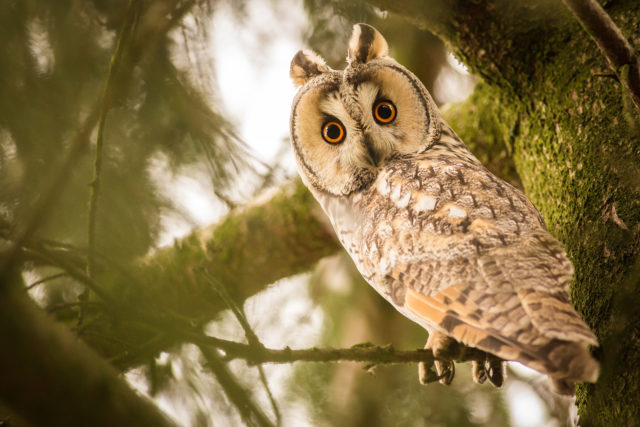
Paleozoology
A result of the cross-disciplinary approaches of geology, paleontology, zoology and sometimes archaeology, paleozoology is the study of fossils of extinct animals. Once about the discovery of new species and examining their bone structures, modern paleozoologists are concerned now with much broader data sets such as diet, environment, ecology and environment, and evolution. This can include any of the subdisciplines listed here including vertebrates and invertebrates, aquatic, birds and protobirds, early mammals and so on.
Primatology
Primates (42) include monkeys, chimpanzees, all apes (gorillas, orangutans, humans), lemurs and tarsiers. Today, primatology is further divided into two subcategories: strepsirrhini (lemurs and lemur-like) and haplorhini (tarsiers and all simians including apes, which means humans too). Primates are mammals with a relatively large brain. With the exception of humans, they live only within the tropics and subtropics and broadly divided into Old World and New World primates.
Protozoology
Protozoa are one of the most unusual and intriguing animal species. They are not true animals, but they are not plants either. Protozoa are simple lifeforms that display many animal-like tendencies. They are single-celled and known as “protozoa”. Their animal attributes include independent movement, predation, and the need to absorb food (rather than creating its own such as plants) (43).
Soil Zoology
Animals that live in soil have a unique ecology and lifestyle. That is why they require a subdivision. Soil science and the life within it are complex, and so is the fauna that inhabits soils (44). This can be anything from protozoa and other microscopic forms of life that live in soils, contributing to the nutrient cycle, through to worms and right up to small mammals such as moles. Understanding these lifeforms is vital to our continued food supply. Some are pests but others, believed to be pests, often have beneficial attributes. Worms, for example, may eat crops, but their movement maintains aerobic environments.
Vertebrate Zoology
As invertebrate zoology, but covering all animals that have a spine: amphibians, birds, fish, mammals, and reptiles.
Zoogeography
This is not the study of specific species or individual animals, but the distribution of species (45). It's a useful ecological tool using applied math such as statistics to monitor population growth, density, migration and other topographical/geographical attributes of a species profile. While some monitor such data and produce reports, there is also an element of theory to zoogeography. Specifically, some zoogeographers examine trends and try to explain why certain species utilize and inhabit certain environments, why they gravitate towards certain areas or away from others, and define the reasons for seasonal migrations.
Zoography
Also known as descriptive zoology, this is an applied area of zoology which defines animal habitats and behaviors (46). It is closely related to zoogeography but is not limited to geographical data although it is interested in such information as a geographic range(s) and their impact on local ecologies - especially for species that migrate with the seasons. They will examine aspects of the animals in conjunction with this information too.
Zoometry
“zoo” meaning “animal” and “metry” meaning “measurement”. What is the typical size range of a particular species? What is average? How large can they grow? What about appendages and body parts? This is the examination of the sizes of species and their bodily attributes. This includes sexual dimorphism (the relative size of males and females). In most cases, males are marginally larger than females, but in some species, the male is considerably smaller. The anglerfish is a case in point (47) where the female exhibits all the signs of a typical fish while the male is tiny, looking for like a parasitical attachment.
What Issues and Challenges Face Modern Zoology?
You'd be forgiven for thinking that this important area doesn't have challenges, especially when some prominent researchers claims most of the major questions have already been solved. However, as we unravel the biological sciences, animals, and their impact on our planet,
Changing Demands for Zoos, Aquariums, and other Animal Parks
These tourist attractions are a big draw all over the globe. By the 1980s, the public began questioning their inherent value and whether they did more harm than good. Taking animals from the wild is (in most cases) was seen as an increasingly bad thing. Zoos were relics of a much older age when high society took animals for the express entertainment of other people. But now, they have gone through a phase of enormous transition.
Where once they were about display and entertainment, they have taken to understanding the needs of the animals, engaged in conservation and breeding programs, moved towards education and research (48). It is thanks to pressure from conservationists that their adoption of the sciences of zoology merely beyond environment and food. But zoos must continue to employ and consult zoologists and engage in the positive application of researcher findings, to remain relevant and do more good than harm.
Conservation and Ecology
Over the remainder of the century, it is likely that zoology will move from one of pure study to one where roles of professionals engage with ecology and conservation. From the control and management of invasive species to ensuring ecological balance for threatened species, zoology will continue to adapt to and work in conjunction with conservation biologists. Animals do not exist in isolation; they have an ecological role to fulfil that impacts and is impacted by plants, predators, prey, human actions such as agriculture, urbanization and land clearance for any other reason. It is likely that zoology will move more in line with the intended outcomes of environmental sciences, especially as recent degree options include such titles as conservation biology.
Another challenge related to conservation and ecology is the need to respect the boundaries of protected species, to study and conserve with minimal interruption, and performing studies in war zones and conflict areas. Site visits for large projects to examine endangered species bring the risk of ecological damage, animal attack, and risking the ire of a government if not handled properly.

Climate Change
Many of the conservation issues that zoologists may be required to assist with are caused by ongoing anthropogenic climate change. Changing climates can lead to bleaching of the oceans, the death of large areas of tree canopy, some areas will become wetter while some will become arid, extreme weather such as flooding and drought are also more prevalent. With climate change comes ecological change and that means a landscape's zoological profile will change. There are already reports of mosquitoes moving north from the equator and into subtropical regions where they have not been present for thousands of years. This could lead to the spread of diseases such as malaria.
Latitudinal Diversity Gradient
One of the biggest challenges for zoogeographers is in understanding how and why species diversity increases the closer we move to the equator. Heading either north or south towards either pole, biodiversity for animals and plants shrink until reaching the pole. Before we get there, landscapes do not become barren, but diversity certainly decreases (49). It's been known for decades with many papers published on the phenomena. Perhaps the advent of big data analytics may be able to go some way to solving this puzzle for botanists and zoologists.
Unsolved Evolutionary Puzzles
And then there are the great puzzles for evolutionary theory. Some apply to plants, fungi and animals, but some particularly perplex zoology.
Cambrian Explosion: Specifically, the causes of the Cambrian Explosion, so-called because it led to the emergence of a large number of species in a relatively short time (70-80 million years). This is a long time by human standards, but before it, most life was single-celled and simple. There are few precursors on which to base a theory of how it happened and it is not clear whether the proto lifeforms that appeared prior to The Cambrian Explosion were true animals. By present evidence, the first simple animals are likely to have been sea sponges (50).
Evolution of flight: This has never satisfactorily been explained - not just the how, but the why (51). It's likely it developed from a simple wing seen in some modern flying squirrels and the Petaurus. They glide or float rather than engage in true flight, although no common fossils have been found to all birds, to bats, or even insects.
Evolution of sexual reproduction: The earliest single-celled lifeforms reproduced asexually and it's not clear precisely when sexual reproduction evolved (52), although relatively recently in the fossil record at 1.2 billion years, some 600 million years before the Cambrian Explosion, and even before the earliest plants. Sexual reproduction now occurs in around 99% of species but its true origin and even why it evolved at all, is yet to be answered.
The search for common ancestors: Most of our evidence for evolution before the dawn of genetic science exists in comparisons of bone assemblages. The tree of life is a complex puzzle and sometimes ancestry is moved back. It is unlikely there are ancestor species for which we will never find remains because they no longer exist. With each piece of the puzzle, it's likely that more gaps will appear, although smaller than before. It's always been a problem that not enough fossils exist as they only survive under certain conditions. Yet the search goes on for common ancestors between the enormous range of diverse life.
Understanding Aging
Although we tend to assume that solving the mystery of ageing and age-related disease is one for geneticists studying humans, some of the answers we have received in recent years may yet come from zoology. In a study released in 2017, a seminal work on the anatomy, genetics and aging process of the cold water species the Greenland Shark, showed the creatures experience remarkable longevity - perhaps up to 400 years (with a margin of error of up to 120 years either side which means they could live to close to 500 years under normal circumstances) (52). They grow just 1cm per year (less than 1/2 inch), live in an extremely cold environment, and have extremely slow metabolic rates.
Sources
- https://www.britannica.com/science/zoology
- https://plato.stanford.edu/entries/aristotle-biology/
- https://dash.harvard.edu/bitstream/handle/1/3708554/Schiefsky_functions.pdf?sequence=2
- http://scholarcommons.usf.edu/cgi/viewcontent.cgi?article=1336&context=etd
- http://dergiler.ankara.edu.tr/dergiler/37/772/9842.pdf
- https://plato.stanford.edu/entries/arabic-islamic-influence/
- http://inpress.lib.uiowa.edu/Feminae/DetailsPage.aspx?Feminae_ID=1162
- http://www.newworldencyclopedia.org/entry/Albertus_Magnus
- https://www.jstor.org/stable/20027483
- https://news.harvard.edu/gazette/story/2011/12/when-art-advanced-science/
- https://www.nature.com/articles/ncb0209-111
- https://www.jstor.org/stable/987231?seq=1#page_scan_tab_contents
- https://www.nature.com/scitable/topicpage/gregor-mendel-and-the-principles-of-inheritance-593
- https://www.ncbi.nlm.nih.gov/pmc/articles/PMC2660586/
- https://www.asas.org/services/student-resources/what-is-animal-science
- https://books.google.co.uk/books?id=vrueZDfPUzoC&pg=PA28&redir_esc=y#v=onepage&q&f=false
- http://www.pastperfect.org.uk/archaeology/zooarch.html
- https://www.discoveranthropology.org.uk/about-anthropology/what-is-anthropology/biological-anthropology.html
- https://www.ncbi.nlm.nih.gov/pmc/articles/PMC4536067/
- https://www.britannica.com/technology/bionics
- http://www.ucmp.berkeley.edu/about/shortcourses/shortcourse11.php
- http://science.jrank.org/pages/348/Anatomy-Comparative.html
- https://www.britannica.com/science/embryo-human-and-animal
- https://www.ncbi.nlm.nih.gov/books/NBK8282/
- https://www.sciencedirect.com/topics/agricultural-and-biological-sciences/herpetology
- https://www.americanscientist.org/article/tardigrades
- https://www.nature.com/subjects/ichthyology
- http://www.ucmp.berkeley.edu/vertebrates/vertfr.html
- http://www.biokids.umich.edu/critters/Mollusca/
- https://nhm.org/site/research-collections/mammalogy/faqs
- http://horizon.documentation.ird.fr/exl-doc/pleins_textes/pleins_textes_7/b_fdi_59-60/010026034.pdf
- http://www.bio.umass.edu/micro/klingbeil/590s/Lectures/12590Lect24.pdf
- http://www.actforlibraries.org/what-is-ornithology/
- https://www.cwu.edu/primate/what-primatology
- http://microbiologyonline.org/about-microbiology/introducing-microbes/protozoa
- https://www.sciencedirect.com/science/article/pii/S1164556301011153
- https://www.britannica.com/science/zoogeography
- https://biologydictionary.net/zoology/
- https://www.livescience.com/49330-animal-sex-anglerfish.html
- https://www.zsl.org/blogs/wild-science/the-case-for-zoos-a-scientists-perspective
- http://eprints.uni-kiel.de/4048/1/Hillebrand_2004_Amer_nat.pdf
- http://news.mit.edu/2016/earth-first-animal-simple-sea-sponge-0222
- http://www.ucmp.berkeley.edu/vertebrates/flight/evolve.html
- http://www.sciencemag.org/news/2016/08/greenland-shark-may-live-400-years-smashing-longevity-record
- Guide to Parasitology - November 19, 2018
- Deserts as Ecosystems and Why They Need Protecting - November 19, 2018
- Conservation: History and Future - September 14, 2018



